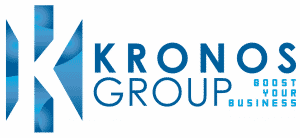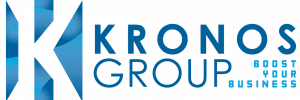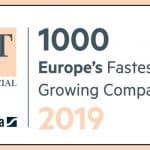Features that should be considered when adopting a procure-to-pay system

Summary
Businesses are increasingly looking for avenues that will simplify business processes, result in a competitive advantage and unique selling proposition, and allow businesses to stand tall during cascading market conditions and economic standpoints. Along with simplicity and streamlined processes, businesses can benefit from cost savings, improved efficiency, and better compliance with company policies and external regulations. In this blog post, we discuss the must-have features of a procure-to-pay system and what it means to implement a procurement system for the long-run of a business.
In the present business landscape, competition is increasingly becoming fierce, consumer needs and demands are constantly evolving, globalisation paces quicker, and as economic conditions continue to be dense and volatile, businesses are increasingly turning towards methodologies that simplify and ease processes.
Procurement can reap many benefits for businesses such as cost savings, improved efficiency, and better compliance with company policies and external regulations. Procure-to-pay is a relatively new concept integrating connectivity between procurement and purchasing processes. The full automation of the purchasing process secures resources for business functions.
This concept is now essential for the maintenance of a smooth flow and the binding of processes, such as benefitting from a smooth allocation of resources whilst balancing costs and maintaining strong stakeholder relationships.
What are some must-have features of a procure-to-pay system?
A procure-to-pay system is designed to tackle the entire procurement process, from requisitioning and negotiation to quality control and payment.
These are must-have features for a procure-to-pay system:
- Purchase requisition management: This feature allows the creation and submission of purchase requests and specialities. It encounters and holds details like item descriptions, quantities, and stakeholder credentials.
- Supplier management: This feature holds supplier information, tracks supplier performance, and manages relationships to facilitate the selection of appropriate stakeholders. This feature is important for resilience, compliance, quality, cost management, and business image.
- Catalogue management: This is the provision of a centralised purview of requested items, negotiated prices, and supplier contact information. This allows businesses to make decisions, determine cash flows, and maintain clear lines of communication.
- Quality control: This tracks and solidifies the purchase receipt order to meet the distinct standard of quality required by the firm. This ensures that a business is consistent and accountable which builds image and brand personality.
- Invoice management: This is the linking of invoices and receipts; a procure-to-pay system must align the receipt with the purchase history and ensure accuracy. This allows businesses to make cash flow and financial-based decisions for processes.
- Cross-calculation: This feature cross-calculates and validates purchase invoices and receipts to detect discrepancies. This allows a business to make better financial decisions and lower financial confusion, wastage, and losses—this makes the base of financial information accurate and reliable.
- Approval process coordination: This coordinates the approval process for invoices and payments and ensures they are aligned with organisational policies and regulations. This inhabits better workflow processes and builds financial discipline within the organisation.
- Payment processing: In the modern day, businesses must be open to various payment methods, such as electronic funds transfer, cheques, and scheduled payments based on contractual terms.
- Reporting and analytics: This feature is very advantageous for firms as report generation and analytics are curated based on spending patterns, supplier performance, and financial metrics to support data-based decision-making.
- Integration capabilities: Having a procure-to-pay system connects interfaces with other systems used in the organisation such as systems of enterprise resource planning, accounting, and stock management software—this creates a nature of transparency and visibility within operational processes.
What do procure-to-pay systems achieve in the long run?
In the long run, adopting a procure-to-pay system smoothens operations, increases business potential, safeguards the business image, and reduces the chances of miscommunication. Adopting procure-to-pay systems allows businesses to be more consistent, coordinative, accurate, and accountable.
A procure-to-pay system streams and widens the base of decision-making; this allows a business to be more aware of its actions. The system facilitates a base of discipline before implementing and making decisions, which is likely to improve the financial control of a firm whilst also prioritising time management.
With procure-to-pay systems being implemented, a business can greatly benefit by improving the pace of processes, scalability, and usability. 70% of companies gain brand value through the implementation of procurement automation systems since they tend to boost brand propositions and derive unique selling points for firms.
Reach out to a procurement consultant to help you navigate your way through procurement processes
The implementation of a procure-to-pay system is a strategic and prudent decision taken by businesses. A business can make use of procurement consulting to gain a competitive advantage, consumer demand, and stakeholder satisfaction.




